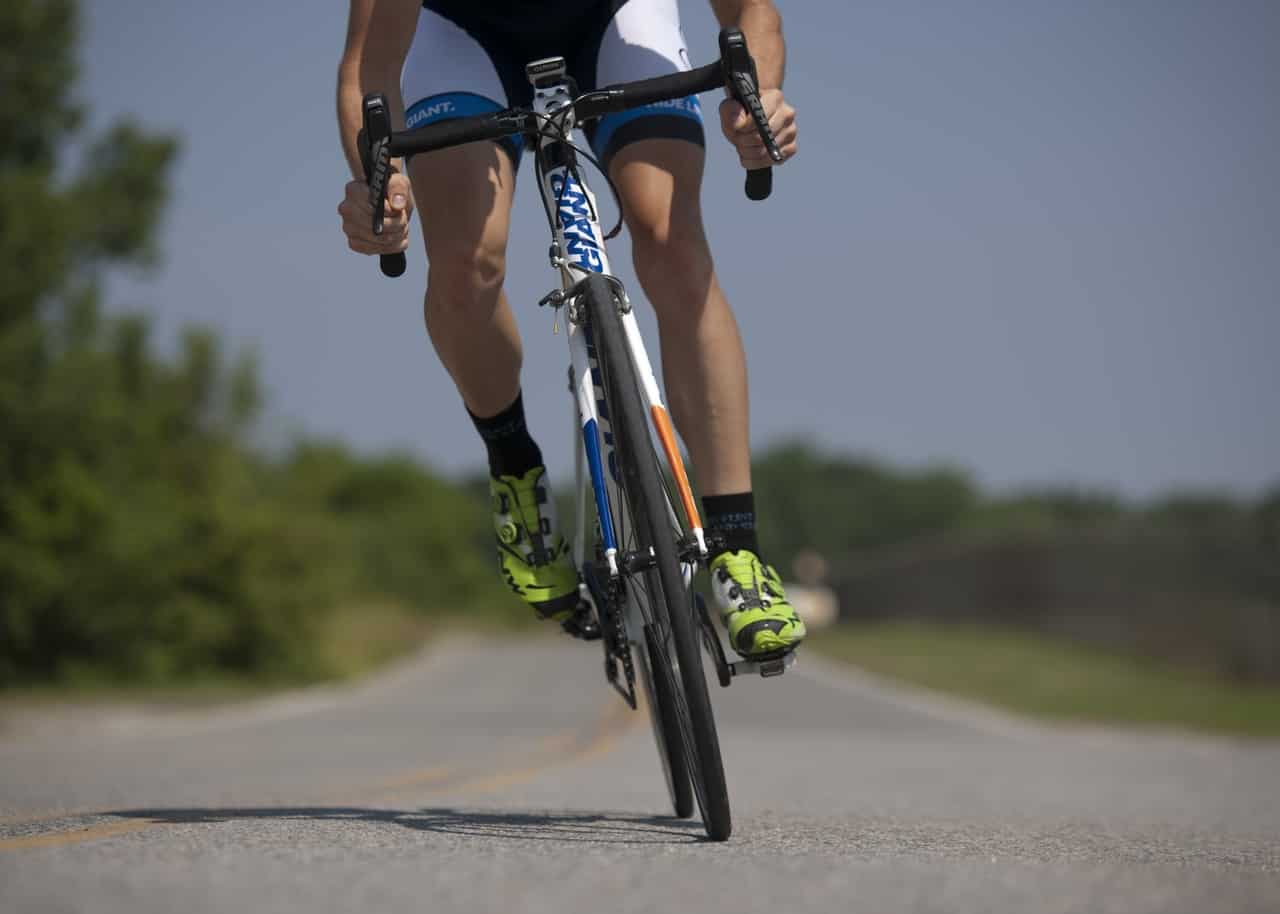


“Ride with caution, safeguard your health. While the link between bike riding and prostate problems is still under study, adopting preventative measures ensures a balance between the joy of cycling and the preservation of prostate well-being.”
As cycling has grown in popularity as a form of recreation and transportation, there have been concerns about its potential impact on prostate health. Many people ask, “Can bike riding cause prostate problems?”
Read More : ” How Does Mountain Bike Suspension Work? “
This detailed guide will explore the relationship between cycling and prostate health to better understand the issue.
Prostate problems, such as benign prostatic hyperplasia (BPH) and prostatitis, are common in men, especially as they age. Several studies have shown a potential link between cycling and certain prostate problems.
Prolonged pressure on the prostate area while cycling, along with vibration and repetitive movements, may raise concerns about possible harmful effects.
However, it is important to note that the link between cycling and prostate problems is not fully understood. While some studies have shown a higher prevalence of prostate problems in cyclists, others have found no significant association.
The effect of cycling on prostate health can vary depending on factors such as duration, intensity, saddle design, and individual sensitivity.
Various strategies should be considered to reduce potential risks, including using a properly fitted saddle, adjusting riding position, taking regular breaks during long rides, and performing appropriate stretching and strengthening exercises.
It is also recommended to consult your doctor for personal advice and regular prostate health checkups.
In conclusion, although the link between cycling and prostate problems requires further research, cyclists should be aware of the potential risks and take precautions to prioritize their prostate health. By balancing the benefits of cycling and taking the right precautions, people can continue to enjoy the activity while maintaining their health.
Read More : ” How Many Gears Does A Mountain Bike Have? “
Understanding Prostate Problems: A Brief Overview
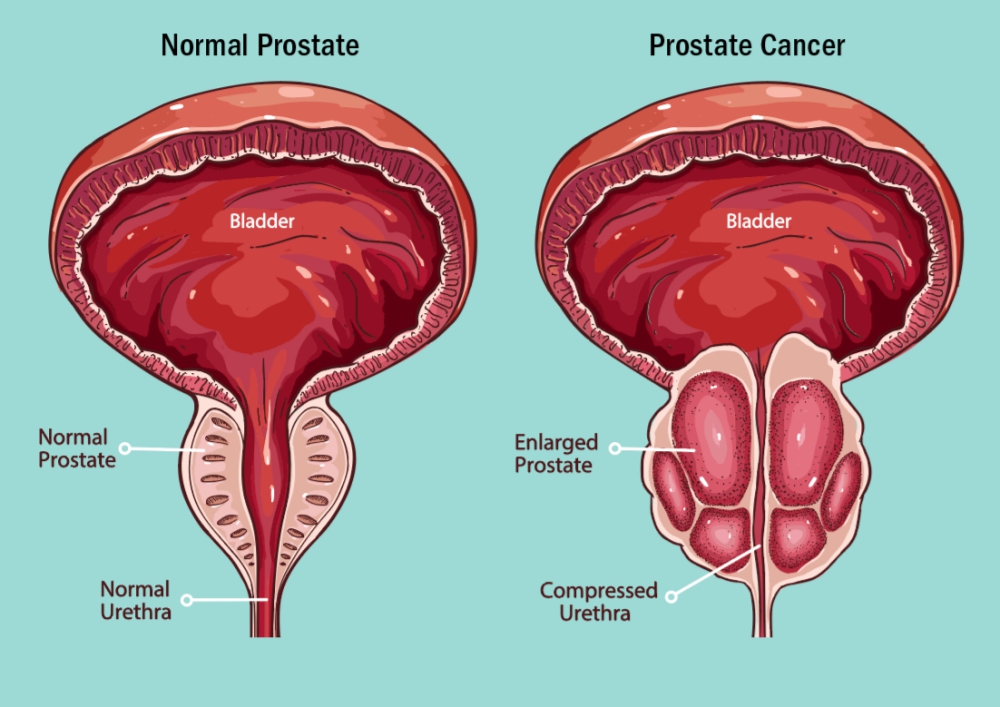


The prostate, a small gland located below the bladder in men, plays an important role in reproductive health. However, it is not uncommon for men to experience various prostate problems as they age. In this article, we will briefly overview prostate problems, their symptoms, and the importance of active medical care.
Read More : ” Is Downhill Mountain Biking Dangerous? “
What is the prostate?
The prostate is a walnut-sized gland that surrounds the urethra and is responsible for transporting urine and semen out of the body. Its main function is to produce seminal fluid that nourishes and protects the sperm.
Common prostate problems:
- Benign prostatic hyperplasia (BPH):
BPH refers to a benign enlargement of the prostate that can cause urinary tract symptoms such as frequent urination, a weak urine stream, or difficulty starting or stopping urination.
- Prostatitis:
Prostatitis is an inflammation of the prostate gland, usually caused by a bacterial infection. Symptoms include pelvic pain or discomfort, frequent urination, and an urge to urinate.
- Prostate cancer:
Prostate cancer is the development of malignant cells in the prostate gland. It is one of the most common cancers in men, but early detection and treatment are beneficial.
Symptoms to watch out for:
It is important to be aware of potential symptoms that may indicate prostate problems, such as changes in urination (frequent urination, poor flow of blood in the urine), pelvic discomfort, pain when urinating or ejaculating, and erectile dysfunction. If symptoms appear, it is recommended to consult a doctor.
Proactive health:
Regular check-ups and examinations are very important for maintaining prostate health. Prostate-specific antigen (PSA) blood tests, digital rectal examinations, and other diagnostic tools aid in early detection and timely treatment ensuring the best outcome for all prostate-related conditions.
Lifestyle factors:
Certain lifestyle choices can promote prostate health. Maintaining a balanced diet rich in fruits, vegetables, and whole grains, exercising regularly, staying hydrated, and avoiding excessive alcohol consumption is beneficial for overall health, including prostate health.
Career guidance Search:
If you are experiencing any symptoms that bother you or have any questions about the health of your prostate, it is very important to consult with your doctor. They can provide personalized advice, run the necessary tests, and resolve any issues you may have.
Therefore, understanding prostate problems is essential to men’s health and well-being. Regular check-ups, awareness of symptoms, and active health care promote early detection and effective treatment of prostate-related conditions.
Men can lead fulfilling lives and maintain optimal reproductive function by prioritizing prostate health. Remember that knowledge and active medical care are the keys to promoting prostate health and overall health.
Read More : ” How To Ride Uphill On A Mountain Bike? “
The Potential Link: Exploring the Relationship Between Bike Riding and Prostate Health



Cycling is becoming more and more popular as a form of entertainment and transportation. However, there are concerns about its potential impact on prostate health.
In this article, we’ll take a deeper look at the potential link between cycling and prostate health to shed some light on this issue.
Prostate and its vulnerabilities:
A vital part of the male reproductive system, the prostate is prone to a variety of health problems as we age. Conditions such as benign prostatic hyperplasia (BPH), prostatitis, and prostate cancer are common.
Continuous pressure and vibration:
One of the problems with cycling and prostate health is the long-term pressure applied to the prostate area while cycling. The design and location of the bicycle seat can cause compression and potential damage to the prostate.
Additionally, the vibrations and repetitive movements associated with cycling can be dangerous.
Research and Findings:
Many studies have explored the potential link between cycling and prostate problems, but the results are mixed. Some studies show a higher prevalence of prostate problems in cyclists, while others report no significant association.
Factors such as riding time and intensity, saddle design, and individual sensitivity are thought to play a role.
Potential risk factors:
Several factors can increase the risk of prostate problems in cyclists. Riding or cycling long distances, using an inadequately padded or unsuitable saddle, and adopting an aggressive riding stance can exacerbate the effect on the prostate.
Prevention:
Various measures can be taken to reduce the potential risk. Using a well-fitting, comfortable saddle, choosing a design that puts less pressure on the perineum, and adjusting your riding position to minimize pressure on the prostate can help keep your prostate healthy.
Routine inspection:
Men who cycle frequently or vigorously should have regular prostate health checks, including a prostate-specific antigen (PSA) blood test and a digital rectal exam. This screening can help with early diagnosis and prompt treatment of any prostate-related condition.
Individual variant:
It is important to recognize that there are individual differences in prostate sensitivity and susceptibility to the potential effects of the cycle. Some men may experience a more pronounced effect, while others may not be significantly affected. Personal medical history and routine monitoring are important.
In conclusion, the potential link between cycling and prostate health requires further research and understanding. Although some research suggests a possible link, exposure can vary based on several factors.
By taking precautions, maintaining good cycling fitness, and being aware of prostate health through regular checkups, men can reduce potential risks while reaping the benefits of cycling. As with any health problem, it is recommended to consult your doctor for personal concerns and personal advice.
Read More : ” How To Get Better At Downhill Mountain Biking? “
Research Findings: Studies on the Impact of Cycling on Prostate Issues
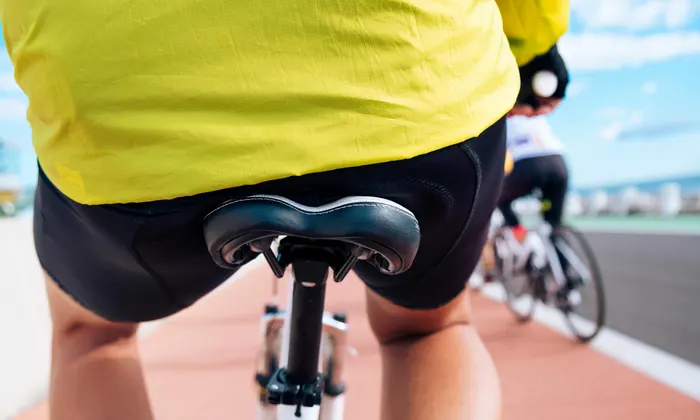


Cycling has gained immense popularity as a recreational and sporting activity and has sparked numerous studies to explore its potential impact on prostate health. In this article, we will review the research findings on the association of cycling with prostate problems and explain the importance of cycling for cyclists and medical professionals.
The effects of cycling on prostate health have attracted the attention of medical research. The study aims to explore the potential link between cycling and prostate problems and shed light on this important question.
Prevalence of prostate problems among cyclists:
This study examined a large number of cyclists and evaluated the prevalence of prostate problems compared to non-cyclists. The results show a higher incidence of certain prostate problems in cyclists, a potential correlation worthy of further investigation.
Cycle Length and Intensity:
Focusing on the impact of cycle length and intensity, this study examines how these factors affect prostate health. The results suggest that prolonged or intense cycling may increase the risk of developing prostate problems, emphasizing the need for moderation and proper training.
Saddle design and prostate compression:
Researchers investigated the relationship between saddle design and its effect on prostate health. The study highlights the importance of ergonomic saddle design and proper placement to minimize pressure on the prostate gland, potentially reducing the risk of associated problems.
Individual variation and sensitivity:
This study highlights individual differences in prostate sensitivity and susceptibility to the effects of cycling. He points out that while some cyclists may experience noticeable effects on their prostate, others may be less affected. Understanding these variations helps in a personalized approach to healthcare.
Implications and Recommendations:
Together, the research findings highlight the importance of maintaining awareness and taking proactive steps to protect prostate health while reaping the benefits of cycling. Recommendations include regular prostate health checks, appropriate stool selection, reduction of cycle length and density, and individualized treatment based on individual risk factors.
Read More : ” How To Become A Better Mountain Biker? “
Importance:
Prostate Health Awareness:
The research findings help raise awareness of potential prostate health risks and considerations for cyclists. This enables individuals to make informed decisions and take the necessary measures to protect their well-being.
Prevention and early diagnosis:
This research identifies a potential link between cycling and prostate problems, enabling cyclists to adopt preventive measures and strategies that can reduce their risk of developing prostate problems. This highlights the importance of regular checkups and early detection to effectively manage emerging conditions.
Optimization of cycling apps:
Insights from research findings help optimize cycling practices and equipment design to minimize potential adverse effects on the prostate. This provides a more enjoyable and safer cycling experience while maintaining good prostate health.
Research results on the effects of cycling on prostate problems provide valuable information for cyclists and healthcare professionals. By considering these results and taking appropriate precautions, cyclists can find a balance between a love of cycling and good prostate health.
Future research could further expand our understanding and pave the way for tailored approaches to improving cyclist well-being.
Factors at Play: Duration, Intensity, and Saddle Design: Understanding their Impact on Prostate Health



Cycling is a popular sport enjoyed by people of all ages and fitness levels. But when it comes to prostate health, several factors come into play. In this article, we look at the impact of saddle length, density, and design on prostate health, highlighting the importance of cyclists.
Cycle time:
Cycling time refers to the time spent cycling in a single session or over a long period. Studies have shown that long-term cycling can increase the risk of prostate problems. If you spend too much time cycling, the prostate gland is subjected to prolonged pressure and vibration, which can cause discomfort or other related problems.
Cycling intensity:
Cycling intensity is related to the effort exerted during the activity, which ranges from light to moderate cycling to high-intensity cycling. Intense cycling can have an even greater impact on the prostate due to increased stress and pressure on the pelvic area.
It is important to note that high-intensity cycling does not automatically cause prostate problems, but may be an additional factor in people who are already at risk or have pre-existing conditions.
Prostate saddle and compression design:
The design and type of saddle used can have a significant impact on prostate health. Some saddles can put excessive pressure on the perineal area, putting pressure on the prostate and possibly causing discomfort or injury.
To minimize the risk of prostate-related problems, an ergonomic saddle with a notch or recess designed to reduce pressure on the perineum is recommended.
Read More : ” Why Is Mountain Biking So Popular? “
Understanding the importance of these factors can help cyclists make informed decisions and take proactive steps to protect prostate health:
Modulate duration and frequency:
Measure the duration and frequency of cycling to reduce the potential impact on prostate health. Take regular breaks during long trips to relieve pressure on the prostate and allow adequate recovery time.
Adjust the intensity level:
It is important to balance the intensity of your cycling workout. Add to that a low-intensity or recovery day to give your body time to rest and recover, including your prostate.
Choose a prostate-safe saddle:
It is very important to invest in a well-designed saddle that reduces perineal pressure and minimizes prostate compression. Consult a specialist or visit a professional bike shop to find a saddle that fits your anatomy and provides optimal comfort.
Listen to your body:
Watch for any discomfort or changes in the pelvic area, including the prostate area, during and after riding. If you have persistent symptoms or problems, see a doctor experienced in urology or sports medicine.
By keeping these factors in mind and taking proactive steps, cyclists can balance their passion for cycling with maintaining prostate health. It is important to remember that each person’s experience may be different, so a personalized approach and regular prostate checks are recommended, especially for cyclists who cycle frequently or intensively.
Therefore, saddle length, density, and design are important factors when considering the impact on cyclist prostate health. By understanding the potential risks associated with prolonged cycling, high-intensity cycling, and poor saddle design, cyclists can make the right choice to protect prostate health while reaping the many benefits of this exciting activity.
Mitigating Risks: Strategies for Prostate-Friendly Cycling
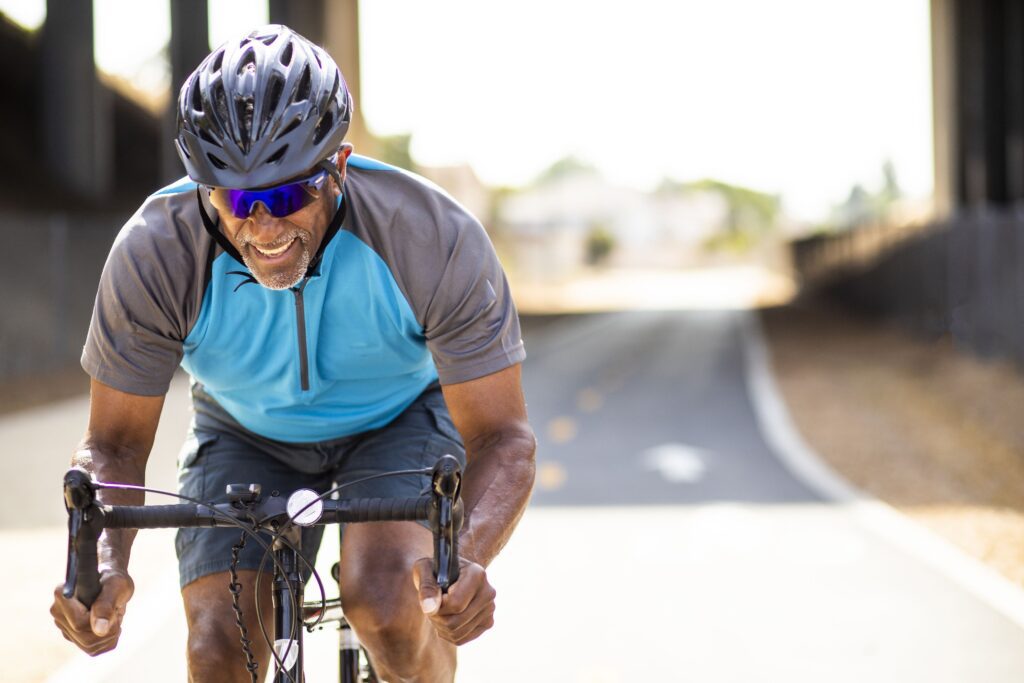


Cycling is great exercise and a great form of entertainment. However, concerns about its potential impact on prostate health have led to the development of strategies to promote the prostate-friendly cycle. In this article, we look at several strategies that can help reduce risk and promote healthier cycling for men.
Optimum Seat Selection:
Choosing the right saddle is very important for safe cycling. Look for a saddle whose design reduces pressure in the groin area and provides proper support for the seated bones. Consider a saddle with cuts or channels that reduce pressure on the prostate by minimizing the risk of discomfort or compression.
Adjusting and positioning the saddle:
Proper saddle fit and positioning play an important role in reducing the risk of prostate cancer. Make sure the seat is straight and correct to maintain the natural alignment of the spine. Make minor adjustments to find the most comfortable and supportive position that minimizes pressure on the prostate area.
Lining and padding:
Padding or extra padding on the saddle can help increase comfort and reduce the impact on the prostate. Consider using gel or foam seat covers or purchase padded cycling shorts to provide extra support and reduce riding pressure.
Regular rest and position changes:
Regular rest on long journeys improves blood circulation and reduces pressure on the prostate. Stand up, stretch, and change positions periodically to redistribute body weight and reduce constant pressure in certain areas.
Fits the right bike:
Proper bike fit is essential for prostate-friendly cycling. Incorrect bike seats can cause poor posture and increased pressure on the perineal area. Consult a professional bike fitter to optimize your bike’s settings, including seat height, handlebar position, and overall bike geometry.
Gradual increase in exercise intensity:
Avoid drastically increasing the intensity of your workout, especially if you’re new to cycling or haven’t exercised in a while. Gradually increase the intensity and duration of your workouts so your body, including the prostate, adapts and avoids unnecessary stress or discomfort.
Core strengthening and exercises for pelvic floor muscles:
Strengthening the core and pelvic floor muscles can provide additional support to the pelvic area, including the prostate. Incorporate exercises like planks, bridges, and Kegels into your workout routine to increase pelvic stability and reduce your risk of prostate-related problems.
Routine prostate examination:
Have regular check-ups with a urological health professional to monitor your prostate health. Discuss any concerns or symptoms you may have and be proactive in managing your overall well-being.
By implementing these strategies, cyclists can reduce potential risks and promote prostate-friendly cycling. It’s important to remember that individual needs can vary, so listen to your body, make any necessary adjustments, and seek professional advice if needed.
Prioritizing prostate health while reaping the benefits of cycling ensures a more satisfying and long-lasting cycling experience.
Read More : ” Why Are Downhill Bikes So Expensive? “
Seeking Professional Advice: Importance of Consultation and Regular Check-ups for Prostate Health
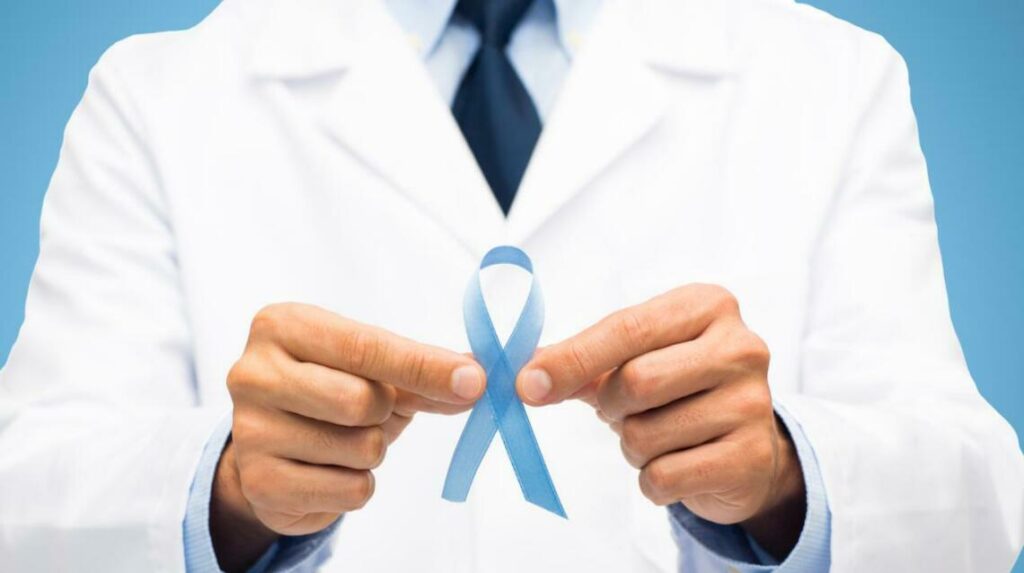


Maintaining good prostate health is essential to a man’s overall well-being, and seeking professional advice is essential to achieving this goal. In this article, we highlight the importance of visiting a doctor and regular check-ups for optimal prostate health.
Expert advice:
Consultations of medical professionals, especially specialists in the field of urology and men’s health, provide invaluable experience and advice. These professionals have in-depth knowledge of prostate health and can provide personalized advice based on individual needs and concerns.
Early detection and prevention:
Regular checkups provide early detection of prostate problems. The prostate-specific antigen (PSA) blood test and digital rectal examination are commonly used as diagnostic tools to identify potential problems.
Detecting any anomalies at an early stage increases the chances of successful treatment and better results.
Individual risk assessment:
Healthcare providers assess individual risk factors for prostate disease based on personal and family history. They consider various factors such as age, ethnicity, lifestyle, and symptoms to determine the appropriate course of action.
Individual risk assessment helps to identify people who may need more frequent screening or targeted preventive measures.
Monitor prostate specific antigen (PSA) levels:
The PSA test measures the level of protein produced by the prostate gland. Regular monitoring of PSA levels can help detect changes over time and provide insight into prostate health. This allows healthcare professionals to identify potential problems and take proactive action if necessary.
Lifestyle Tips:
Health professionals offer key lifestyle recommendations for promoting prostate health. This may include dietary changes, regular exercise, weight control, and other factors that contribute to overall well-being.
Adopting a healthy lifestyle can have a positive effect on prostate health and reduce the risk of prostate-related problems.
Reaction to concerns and symptoms:
Consulting with a healthcare professional allows a person to treat prostate health problems or symptoms. Professionals can reassure, allay anxiety, and recommend appropriate diagnostic tests or treatment options, depending on the specific situation.
A comprehensive approach to men’s health:
Health professionals are taking a holistic approach to men’s health, recognizing that prostate health is just one aspect of overall well-being. They take into account the interdependence of various body systems and provide comprehensive care to maintain optimal health.
Therefore, seeking professional advice and regular check-ups are very important to maintain optimal prostate health. Health professionals provide expert advice, risk assessment, PSA monitoring, problem and symptom management, and lifestyle advice.
By prioritizing regular checkups, people can identify and treat potential prostate problems early, promoting overall well-being and a healthy lifestyle. Remember that your PCP is your partner in prostate health, ensuring you receive the best possible care and guidance for a long and healthy life.
Read More : ” Can You Ride A Mountain Bike On The Beach? “
Conclusion:
In conclusion, the question of can bike riding cause prostate problems highlights the importance of seeking professional guidance for optimal prostate health. Consulting healthcare professionals specializing in urology and undergoing regular check-ups are crucial steps toward maintaining a healthy prostate.
By engaging with healthcare professionals, individuals can benefit from expert guidance tailored to their unique needs. These professionals assess individual risk factors, monitor prostate-specific antigen (PSA) levels, address concerns and symptoms, and provide essential lifestyle recommendations.
Regular check-ups and early detection contribute to effective prevention and timely intervention.
Understanding the potential impact of bike riding on prostate health and implementing strategies to mitigate risks are important. However, seeking professional advice ensures a comprehensive approach to prostate health and allows for personalized care.
Remember, your prostate health is a vital part of your overall well-being. Regular check-ups, professional guidance, and open communication with healthcare professionals help you stay proactive in managing your prostate health.
By taking these proactive steps, you can continue to enjoy the benefits of bike riding while prioritizing your long-term prostate health.
So, if you have questions or concerns about the impact of bike riding on prostate health, don’t hesitate to reach out to a healthcare professional who can provide expert advice and support. Your proactive approach to prostate health will pave the way for a fulfilling and active life on and off the bike.
FAQs:
Is bike riding bad for the prostate?
The irritation of the prostate through bicycle riding, combined with the aging process, can lead to discomfort that can be moderate to severe. You can prevent bicycling-related prostatitis by using a male-specific bike seat, tilting your seat slightly forward and standing on the pedals once every 15 minutes
Can riding a bike increase PSA levels?
Following cycling activity, two studies reported total PSA increased from baseline by up to 3.3-fold, free PSA increased in one study by 0.08±0.18 ng ml(-)(1) and did not change in four studies.
What sport is good for the prostate?
Exercise that is good for your heart is also good for prostate and sexual health. Do 30 minutes of aerobic exercise, like swimming, biking, speed walking, or hiking on most days of the week. You can also add in strength training exercises like working with free weights or weight machines on alternating days.
Is cycling a risk for prostate cancer?
The Koupparis study concludes that there is in fact no positive association between cycling and the development of prostate cancer. In fact, quite a few of the risk factors associated with prostate cancer development could be reduced by cycling.
Is water good for the prostate?
Drinking water is essential for prostate and overall health. On average, it is recommended to consume at least eight cups of water daily. Be sure to drink water during and after exercise.



Welcome to Bikegenics, where passion meets performance! We are a leading online destination for all things related to mountain biking, dedicated to providing you with top-notch gear, expert advice, and an immersive community to fuel your two-wheeled adventures. With a commitment to excellence and a deep love for the sport, we strive to elevate your biking experience to new heights.
